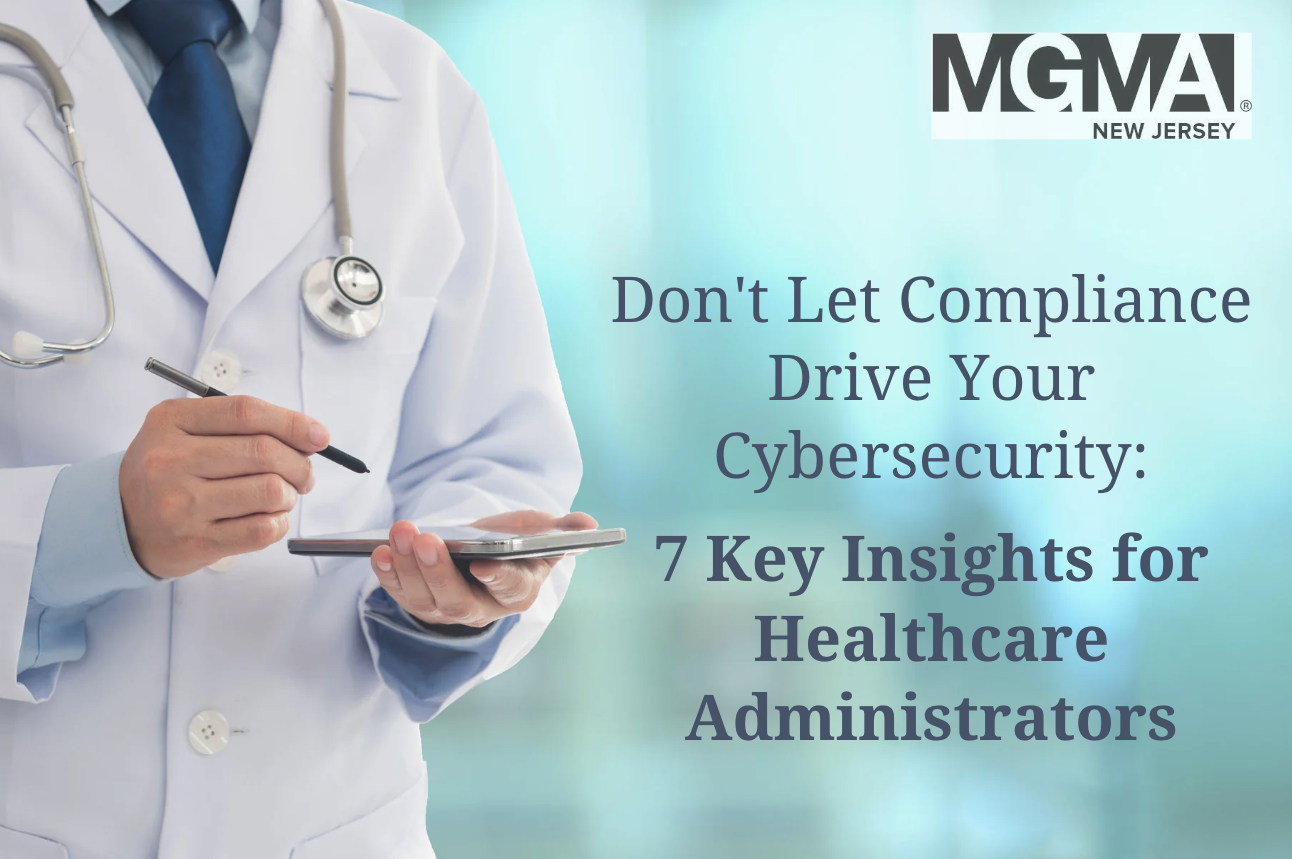Healthcare administrators carry the pivotal duty of protecting patient information as they navigate the complexities of the industry. Compliance often takes the spotlight, but meeting regulations doesn’t guarantee optimal cybersecurity. Bill Sorenson, VP of Product at Netgain, had the opportunity to present upon the various layers of security that are necessary at last week’s New Jersey MGMA Practice Management Conference. Synthesizing the presentation, we encourage you to expand your organization’s approach to security beyond achieving compliance standards. Consider these seven insights when developing or refining your plan:
1. Establish Clear Security Guidelines and Procedures: Create comprehensive policies that establish access control, risk management, data encryption, incident response, and disaster recovery. Beyond creating these, you must execute, evaluate, and refine them consistently.
2. Prioritize Identity and Access Management: Develop robust systems for managing user credentials and access. Traditional username-password combinations are simply not enough. The implementation of multi-factor authentication (MFA) and adherence to the principle of ‘least privilege’ should be a priority.
3. Conduct Regular Audits and Vulnerability Assessments: Conduct regular audits to provide insights into system access and activities. Vulnerability assessments highlight potential security gaps that are currently unmonitored. With this information, you can take preventive measures against potential cyber threats.
4. Implement Data Encryption: Encrypt data, whether at rest, in transit, or in use. That is an indispensable security measure in today’s cyber-threat landscape. Network security should be fortified with firewalls, intrusion detection systems, and regular network vulnerability assessments.
5. Promote a Cybersecurity Culture: Foster an organizational culture that values cybersecurity. This is vital. Regular staff training, recognition for cybersecurity vigilance, and engagement can transform employees into effective ‘human firewalls.’ Cybersecurity is everyone’s responsibility, not just IT’s.
6. Develop Incident Response and Disaster Recovery Plans: Prepare for cyber incidents. Despite best efforts, incidents can happen. Being prepared with an effective incident response and disaster recovery plan can mitigate the damage. Regular drills and updates ensure these plans stay efficient.
7. Engage with Industry Resources: Harness the power of industry resources, collaborate with cybersecurity vendors, participate in healthcare information sharing centers, and align with national cybersecurity agencies to significantly enhance your security posture.
Cybersecurity is a journey, not a destination, and compliance is only one stop on the journey. If you are looking for a partner on this journey, contact us. Netgain collectively provides a proactive risk-centric approach to helping make your healthcare systems more secure, resilient, and trustworthy, significantly exceeding mere compliance.
